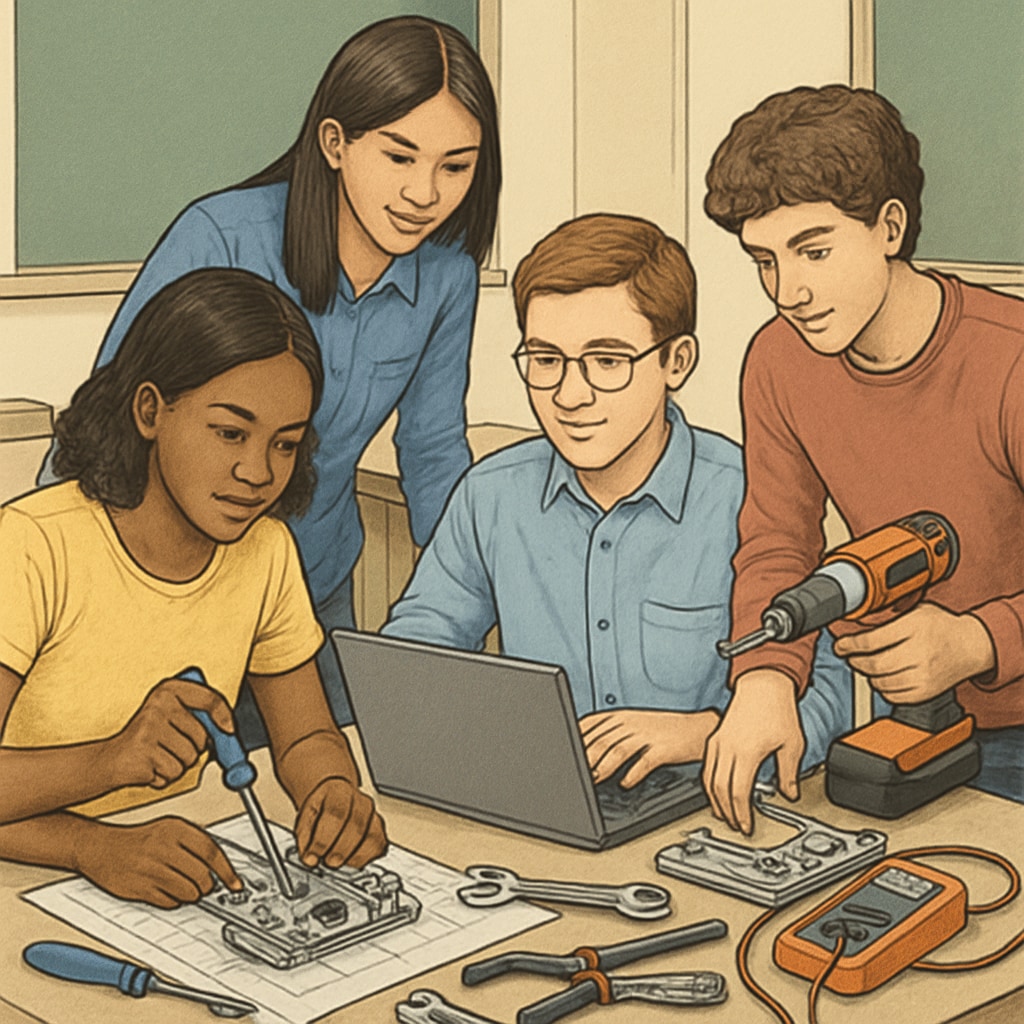Career and Technical Education (CTE) and traditional academic subjects have historically been viewed as separate paths within educational structures. However, as the demands of the 21st-century workforce evolve, there is a growing need to integrate these two streams for the holistic development of students. For school districts and educators, achieving this balance offers the potential to prepare students for both academic success and career readiness. This article examines strategies for integrating CTE with traditional academics in K-12 education, the benefits of such a fusion, and actionable steps to create a comprehensive learning ecosystem.
The Importance of Balancing Career and Technical Education and Academics
CTE programs focus on equipping students with practical, job-specific skills, while traditional academics emphasize foundational knowledge and critical thinking. Balancing these two educational approaches helps students build a well-rounded skill set. For example, a student interested in engineering can benefit from advanced mathematics (traditional academics) paired with hands-on robotics training (CTE). This dual approach not only enhances career readiness but also fosters a deeper understanding of theoretical concepts through practical application.
However, the integration of CTE and traditional academics comes with challenges. Schools often face logistical hurdles, such as aligning curriculum standards and scheduling conflicts. Additionally, there may be a perception gap, with CTE being undervalued compared to academic subjects. To overcome these barriers, schools must adopt innovative models that prioritize both streams equally.

Successful Models for Integrating CTE and Traditional Academics
Several implementation models have proven successful in balancing CTE and traditional subjects. Below are some examples:
- Project-Based Learning (PBL): This approach integrates CTE concepts into academic lessons through hands-on projects. For instance, students might design a sustainable house, combining principles from environmental science, mathematics, and technical drafting.
- CTE-Infused Core Classes: Traditional subjects like math and English are enhanced with CTE applications. For example, algebra lessons may include real-world scenarios like calculating budgets for construction projects.
- Dual Enrollment Programs: High school students take college-level CTE courses while fulfilling their academic requirements. This model allows students to earn credits in both domains, saving time and money.
- Work-Based Learning: Internships and apprenticeships give students real-world experience while reinforcing classroom learning. This approach bridges the gap between theory and practice.
These models showcase that integration is not only possible but also beneficial for students’ long-term success. However, to implement such strategies, educators and school district leaders must collaborate closely to align goals and resources.

Practical Steps for School Districts to Balance Education Structures
To create a balanced education structure that integrates CTE and traditional academics, school districts can follow these practical steps:
- Conduct a Needs Assessment: Understand the local labor market and student interests. This ensures that CTE programs align with regional career opportunities while complementing academic goals.
- Redefine Curriculum Standards: Develop interdisciplinary curricula that combine CTE skills with academic concepts. Collaborate with industry partners to ensure relevance.
- Invest in Professional Development: Train teachers to deliver integrated lessons effectively. Professional development programs can focus on cross-disciplinary teaching techniques.
- Enhance Collaboration: Foster partnerships between traditional academic departments and CTE instructors. Shared planning time can help align lesson objectives.
- Secure Funding and Resources: Utilize federal and state grants, such as Perkins funding, to invest in equipment, training, and curriculum development.
By taking these steps, school districts can build an educational framework that supports both career and academic aspirations, preparing students for a dynamic future.
The Benefits of an Integrated Approach to Education
Integrating CTE and traditional academics offers numerous benefits to students, schools, and communities. These include:
- Enhanced Student Engagement: The hands-on nature of CTE makes learning more interactive, keeping students motivated.
- Improved Career Readiness: Students graduate with both academic knowledge and practical skills, giving them a competitive edge in the job market.
- Stronger Community Connections: Collaborations with local businesses and industries create pathways for internships, mentorships, and employment.
- Broader Skill Sets: A balanced education prepares students not only for specific careers but also for lifelong learning and adaptability.
As a result, integrating CTE with traditional academics helps create a more inclusive and effective educational system that addresses the diverse needs of students and the economy.
Readability guidance: This article uses concise paragraphs, lists, and examples to enhance readability. Transition words like “however,” “in addition,” and “for example” are used throughout to ensure a smooth flow. Active voice is prioritized, and technical terms are defined where necessary.


